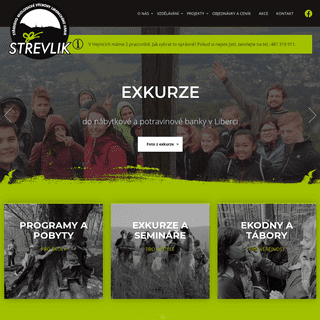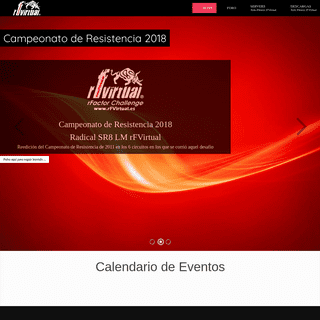Are you over 18 and want to see adult content?
More Annotations

A complete backup of https://fastcapital360.com
Are you over 18 and want to see adult content?
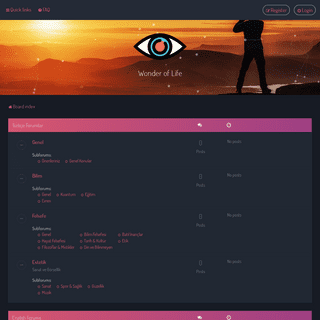
A complete backup of https://wonderof.life
Are you over 18 and want to see adult content?

A complete backup of https://ahtahthiki.com
Are you over 18 and want to see adult content?

A complete backup of https://menalive.com
Are you over 18 and want to see adult content?

A complete backup of https://keenitsolutions.com
Are you over 18 and want to see adult content?

A complete backup of https://cityofalachua.com
Are you over 18 and want to see adult content?

A complete backup of https://lafourchette.com
Are you over 18 and want to see adult content?

A complete backup of https://siteup.ru
Are you over 18 and want to see adult content?

A complete backup of https://spin1038.com
Are you over 18 and want to see adult content?
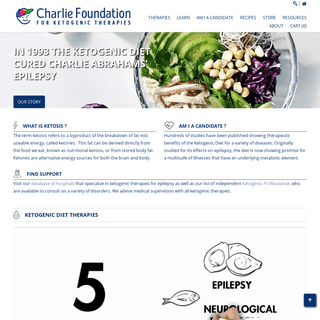
A complete backup of https://charliefoundation.org
Are you over 18 and want to see adult content?

A complete backup of https://eblogx.com
Are you over 18 and want to see adult content?
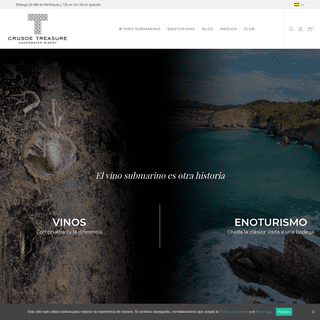
A complete backup of https://bajoelagua.com
Are you over 18 and want to see adult content?
Favourite Annotations

A complete backup of bureau-vallee.fr
Are you over 18 and want to see adult content?

A complete backup of newsgpropertylaunches.com
Are you over 18 and want to see adult content?

A complete backup of boostjuicebars.com.sg
Are you over 18 and want to see adult content?

A complete backup of ptpubliclibrary.org
Are you over 18 and want to see adult content?
Text
AMERICANUS
The Mexican axolotl ( Ambystoma mexicanum) is a famous example of a paedomorphic salamander- one that retains an aquatic, larval phenotype into adulthood. But the axolotl is not the only salamander with a strange life history! Across the tiger salamander species complex ( Ambystoma ), life history is highly variable, including severalspecies
AMPHIBIAWEB DATABASE SEARCH Complete any of the fields below and click on the "Search" button to query the AmphibiaWeb database. Case is not important. Partial words will match. If more than one field is completed, they will be AND'ed together. If you are looking for reptiles, please use the The ReptileDatabase.
BY THE NUMBERS
There are three orders of amphibians: Anura (frogs), Caudata (salamanders), and Gymnophiona (caecilians). The AmphibiaWeb database currently contains 8,342 amphibian species (Jun 7, 2021) , of which 7,362 are frogs and toads, 765 are newts and salamanders, and 215 are caecilians.New species are discovered every year, and the total number of species continues to grow.AMPHIBIAWEB
Rana amurensis lives in West and East Siberia, the Russian Far East, Korea, Northern and Central Mongolia, and Northeastern China. This is one of the most widespread amphibians of the Palearctic. The northern margin of the range runs in Russia: northeastwards from Sverdlovsk Province (the westernmost localities are environs of Turinsk Town: 58º02'N, 63º41'E and Lenino Village in Tavda LIST OF CALL AND VIDEO FILES ON AMPHIBIAWEB List of Call and Video Files on AmphibiaWeb. Sound files are in various formats including MP3, WAV, and RM. Clicking on the "sound files" link will give you detailed information about each file, including the file sizes and formats.AMPHIBIAWEB
This large family has a diversity of forms and natural history modes; likewise it has had a sometimes confusing but active taxonomic history. Its genera are split into two subfamilies, Dicroglossinae (with most of the species) and Occidozyginae.AMPHIBIAWEB
These small to medium frogs are robust bodied with generally round, wide, sometimes large, heads. Species range in a variety of habitats but are generally terrestrial living in open grassland areas to forests, but requires water, standing or moving, to lay eggs and forlarvae.
AMPHIBIAWEB
R. sylvatica is the only cold-blooded tetrapod known to occur north of the Artic Circle in the Western Hemisphere. It is found over most of Alaska and Canada and over the northeastern part of the United States. Its northern limit lies along the treeline from Alaska to Labrador.AMPHIBIAWEB
Of this species, three subspecies are found in Europe. D. pictus pictus is restricted to the islands of Malta, Gozo (Ghawdax) and Sicily, where it is found at altitudes up to 1500m.. D. pictus scovazzi has been introduced from Morocco, and has established stable populations around the Pyrennees Orientales. Their distribution ranges from Narbonne (F) in the north to the region of Cataluña (EAMPHIBIAWEB
A. dickhilleni is endemic to southeastern Spain. Its distribution seems to be limited to several mountain ranges including the Sierra Tejeda and Sierra Almijara (Provinces of Málaga and Granada), the Sierra de Gádor (province of Almería), the Sierra de Baza (province of Grenada), the Sierra Mágina (province of Jaén), and the Sierra de Alcaraz (province of Albacete). AMPHIBIAWEBDECLINESAMPHIBIAWEB SPECIES LISTSCYNOPS ORIENTALISANAXYRUSAMERICANUS
The Mexican axolotl ( Ambystoma mexicanum) is a famous example of a paedomorphic salamander- one that retains an aquatic, larval phenotype into adulthood. But the axolotl is not the only salamander with a strange life history! Across the tiger salamander species complex ( Ambystoma ), life history is highly variable, including severalspecies
AMPHIBIAWEB DATABASE SEARCH Complete any of the fields below and click on the "Search" button to query the AmphibiaWeb database. Case is not important. Partial words will match. If more than one field is completed, they will be AND'ed together. If you are looking for reptiles, please use the The ReptileDatabase.
BY THE NUMBERS
There are three orders of amphibians: Anura (frogs), Caudata (salamanders), and Gymnophiona (caecilians). The AmphibiaWeb database currently contains 8,342 amphibian species (Jun 7, 2021) , of which 7,362 are frogs and toads, 765 are newts and salamanders, and 215 are caecilians.New species are discovered every year, and the total number of species continues to grow.AMPHIBIAWEB
Rana amurensis lives in West and East Siberia, the Russian Far East, Korea, Northern and Central Mongolia, and Northeastern China. This is one of the most widespread amphibians of the Palearctic. The northern margin of the range runs in Russia: northeastwards from Sverdlovsk Province (the westernmost localities are environs of Turinsk Town: 58º02'N, 63º41'E and Lenino Village in Tavda LIST OF CALL AND VIDEO FILES ON AMPHIBIAWEB List of Call and Video Files on AmphibiaWeb. Sound files are in various formats including MP3, WAV, and RM. Clicking on the "sound files" link will give you detailed information about each file, including the file sizes and formats.AMPHIBIAWEB
This large family has a diversity of forms and natural history modes; likewise it has had a sometimes confusing but active taxonomic history. Its genera are split into two subfamilies, Dicroglossinae (with most of the species) and Occidozyginae.AMPHIBIAWEB
These small to medium frogs are robust bodied with generally round, wide, sometimes large, heads. Species range in a variety of habitats but are generally terrestrial living in open grassland areas to forests, but requires water, standing or moving, to lay eggs and forlarvae.
AMPHIBIAWEB
R. sylvatica is the only cold-blooded tetrapod known to occur north of the Artic Circle in the Western Hemisphere. It is found over most of Alaska and Canada and over the northeastern part of the United States. Its northern limit lies along the treeline from Alaska to Labrador.AMPHIBIAWEB
Of this species, three subspecies are found in Europe. D. pictus pictus is restricted to the islands of Malta, Gozo (Ghawdax) and Sicily, where it is found at altitudes up to 1500m.. D. pictus scovazzi has been introduced from Morocco, and has established stable populations around the Pyrennees Orientales. Their distribution ranges from Narbonne (F) in the north to the region of Cataluña (EAMPHIBIAWEB
A. dickhilleni is endemic to southeastern Spain. Its distribution seems to be limited to several mountain ranges including the Sierra Tejeda and Sierra Almijara (Provinces of Málaga and Granada), the Sierra de Gádor (province of Almería), the Sierra de Baza (province of Grenada), the Sierra Mágina (province of Jaén), and the Sierra de Alcaraz (province of Albacete). AMPHIBIAWEB SPECIES LISTS Browse by Family Browse by Family below and see Family Descriptions with all respective species arranged by subfamilies and subgenera. The total number of amphibian species is currently 8,343 (Jun 9,CONSERVATION STATUS
IUCN Conservation Status definitions; A taxon is Data Deficient when there is inadequate information to make a direct, or indirect, assessment of its risk of extinction based onAMPHIBIAWEB
Description Ambystoma laterale is a slender salamader that resembles the species A. jeffersonianum, although the former exhibits a smaller size (7.6-12.9 cm in length), narrower snout and darker color.A. laterale typically possesses a dorsal coloring of grayish-black to bluish black. The lower sides of this species may also display large bluish-white flecks.AMPHIBIAWEB
Description A small species of Ambystoma, dark gray to black with a yellow, tan or olive green dorsal stripe often broken up into blotches (Stebbins 1951).The sides have some white speckling. The ventral side is gray or black (Petranka 1998). Ambystoma macrodactylum columbianum A. m. croceum, A. m. krausei, A. m. macrodactylum, A. m. sigillatumare subspecies.
AMPHIBIAWEB
Sphenophryne rhododactyla: family: Microhylidae subfamily: Asterophryinae: Taxonomic Notes: We follow Rivera et al. (2017) in recognizing Genyophryne, Liophryne, and Oxydactyla as synonyms of Sphenophryne.We acknowledge the relationships among these species remain poorly resolved and there may be additional genus-level taxonomic changes in the future.AMPHIBIAWEB
Asterophrys marani: family: Microhylidae subfamily: Asterophryinae: Taxonomic Notes: We follow Rivera et al. (2017) in recognizing Metamagnusia and Pseudocallulops as synonyms of Asterophrys.While the phylogenetic relationships of these species remains unresolved, they have long been recognized as closely related to one another.AMPHIBIAWEB
Sphenophryne allisoni: family: Microhylidae subfamily: Asterophryinae: Taxonomic Notes: We follow Rivera et al. (2017) in recognizing Genyophryne, Liophryne, and Oxydactyla as synonyms of Sphenophryne.We acknowledge the relationships among these species remain poorly resolved and there may be additional genus-level taxonomic changes inthe future.
AMPHIBIAWEB
Description Cophixalus saxatilis reaches a large size, at least measuring 32 mm SVL and with relatively long hind limbs (TL/SVL, 0.46). Head is moderately wide with a flat and slightly oblique loreal region with a rounded canthus rostralis. The nostrils are closer to the tip of the snout than to the orbits.AMPHIBIAWEB
Andohahela, Chaines Anosyennes. It occurs between 1,200-1,800m asl among rock outcrops in montane rainforest (Raxworthy and Cadle 2008). Life History, Abundance, Activity, and Special BehaviorsAMPHIBIAWEB
Description A large Leptopelis (males 44-50 mm, females 60-70 mm) from East African lowland forests. Webbing rather well-developed. Dorsum uniform green with white heels or brown with a darker triangle with its blunt apex pointing forwards. AMPHIBIAWEBNEW SPECIESWORLD MAP SEARCHHYLIDAEAMPHIBIAN NEWS ARCHIVE The Mexican axolotl ( Ambystoma mexicanum) is a famous example of a paedomorphic salamander – one that retains an aquatic, larval phenotype into adulthood. But the axolotl isn’t the only salamander with a strange life history! Across the tiger salamander species complex ( Ambystoma ), life history is highly variable,including
AMPHIBIAWEB DATABASE SEARCH Complete any of the fields below and click on the "Search" button to query the AmphibiaWeb database. Case is not important. Partial words will match. If more than one field is completed, they will be AND'ed together. If you are looking for reptiles, please use the The ReptileDatabase.
AMPHIBIAWEB
Description A small to medium-sized, semi-aquatic salamander. Dorsum is brown to greenish-brown, and the underside is bright yellow. Variable degree of black speckling on both dorsal and ventral surfaces (Leonard et al. 1993; Petranka 1998).AMPHIBIAWEB
Description There are two morphs, one that was formerly known as Dendrobates azureus, and the previously recognized Dendrobates tinctorius.DNA analysis has shown that these forms are conspecific. Following is a description for the morph that was formerly known as Dendrobates azureus: this morph has bright blue-black arms and legs, paler, almost sky-blue and nearly unmarked sides, and a headAMPHIBIAWEB
This large family has a diversity of forms and natural history modes; likewise it has had a sometimes confusing but active taxonomic history. Its genera are split into two subfamilies, Dicroglossinae (with most of the species) and Occidozyginae.AMPHIBIAWEB
Description Pseudacris triseriata is a small hylid frog that can grow to 39 mm in length but averages 10-37 mm, with females larger than males. The color ranges from gray to brown dorsally, with a creamy venter. Dorsal markings may vary, but usually include three dark narrow, longitudinal stripes which may be broken up into three rows ofspots.
AMPHIBIAWEB
Ingerophrynus ledongensis: family: Bufonidae Species Description: Fei, L., S.-q.Hu, C.-y. Ye, and Y.-z. Huang. 2009. Fauna Sinica. Amphibia. Volume 2. Anura. BeijingAMPHIBIAWEB
R. sylvatica is the only cold-blooded tetrapod known to occur north of the Artic Circle in the Western Hemisphere. It is found over most of Alaska and Canada and over the northeastern part of the United States. Its northern limit lies along the treeline from Alaska to Labrador.AMPHIBIAWEB
Author: Jean Raffaëlli. Plethodon mississippi Highton, 1989. 7,8 cm SVL (plaine côtière), 8,4 cm SVL (hors plaine côtière). Petite taille (sauf sur le plateau appalachien du nord de l’Alabama). M.S. KHAN REFERENCES [AN ERROR OCCURRED WHILE PROCESSING M.S. Khan References [an error occurred while processing Top AMPHIBIAWEBNEW SPECIESWORLD MAP SEARCHHYLIDAEAMPHIBIAN NEWS ARCHIVE The Mexican axolotl ( Ambystoma mexicanum) is a famous example of a paedomorphic salamander – one that retains an aquatic, larval phenotype into adulthood. But the axolotl isn’t the only salamander with a strange life history! Across the tiger salamander species complex ( Ambystoma ), life history is highly variable,including
AMPHIBIAWEB DATABASE SEARCH Complete any of the fields below and click on the "Search" button to query the AmphibiaWeb database. Case is not important. Partial words will match. If more than one field is completed, they will be AND'ed together. If you are looking for reptiles, please use the The ReptileDatabase.
AMPHIBIAWEB
Description A small to medium-sized, semi-aquatic salamander. Dorsum is brown to greenish-brown, and the underside is bright yellow. Variable degree of black speckling on both dorsal and ventral surfaces (Leonard et al. 1993; Petranka 1998).AMPHIBIAWEB
Description There are two morphs, one that was formerly known as Dendrobates azureus, and the previously recognized Dendrobates tinctorius.DNA analysis has shown that these forms are conspecific. Following is a description for the morph that was formerly known as Dendrobates azureus: this morph has bright blue-black arms and legs, paler, almost sky-blue and nearly unmarked sides, and a headAMPHIBIAWEB
This large family has a diversity of forms and natural history modes; likewise it has had a sometimes confusing but active taxonomic history. Its genera are split into two subfamilies, Dicroglossinae (with most of the species) and Occidozyginae.AMPHIBIAWEB
Description Pseudacris triseriata is a small hylid frog that can grow to 39 mm in length but averages 10-37 mm, with females larger than males. The color ranges from gray to brown dorsally, with a creamy venter. Dorsal markings may vary, but usually include three dark narrow, longitudinal stripes which may be broken up into three rows ofspots.
AMPHIBIAWEB
Ingerophrynus ledongensis: family: Bufonidae Species Description: Fei, L., S.-q.Hu, C.-y. Ye, and Y.-z. Huang. 2009. Fauna Sinica. Amphibia. Volume 2. Anura. BeijingAMPHIBIAWEB
R. sylvatica is the only cold-blooded tetrapod known to occur north of the Artic Circle in the Western Hemisphere. It is found over most of Alaska and Canada and over the northeastern part of the United States. Its northern limit lies along the treeline from Alaska to Labrador.AMPHIBIAWEB
Author: Jean Raffaëlli. Plethodon mississippi Highton, 1989. 7,8 cm SVL (plaine côtière), 8,4 cm SVL (hors plaine côtière). Petite taille (sauf sur le plateau appalachien du nord de l’Alabama). M.S. KHAN REFERENCES [AN ERROR OCCURRED WHILE PROCESSING M.S. Khan References [an error occurred while processing TopAMPHIBIAWEB
The Mexican axolotl ( Ambystoma mexicanum) is a famous example of a paedomorphic salamander – one that retains an aquatic, larval phenotype into adulthood. But the axolotl isn’t the only salamander with a strange life history! Across the tiger salamander species complex ( Ambystoma ), life history is highly variable,including
AMPHIBIAWEB SPECIES LISTS Browse by Family Browse by Family below and see Family Descriptions with all respective species arranged by subfamilies and subgenera. The total number of amphibian species is currently 8,342 (Jun 6,BY THE NUMBERS
There are three orders of amphibians: Anura (frogs), Caudata (salamanders), and Gymnophiona (caecilians). The AmphibiaWeb database currently contains 8,342 amphibian species (Jun 7, 2021) , of which 7,362 are frogs and toads, 765 are newts and salamanders, and 215 are caecilians.New species are discovered every year, and the total number of species continues to grow.AMPHIBIAWEB
Asterophrys marani: family: Microhylidae subfamily: Asterophryinae: Taxonomic Notes: We follow Rivera et al. (2017) in recognizing Metamagnusia and Pseudocallulops as synonyms of Asterophrys.While the phylogenetic relationships of these species remains unresolved, they have long been recognized as closely related to one another.AMPHIBIAWEB SEARCH
Scientific Name Photo Sound IUCN Red List Status Vernacular Name Family Order; Rhaebo atelopoides: no photos: Critically Endangered (CR) Bufonidae: AnuraAMPHIBIAWEB
Asterophrys eurydactylus: family: Microhylidae subfamily: Asterophryinae: Taxonomic Notes: We follow Rivera et al. (2017) in recognizing Metamagnusia and Pseudocallulops as synonyms of Asterophrys.While the phylogenetic relationships of these species remains unresolved, they have long been recognized as closely relatedto one another.
AMPHIBIAWEB
Sphenophryne brevicrus: family: Microhylidae subfamily: Asterophryinae: Taxonomic Notes: We follow Rivera et al. (2017) in recognizing Genyophryne, Liophryne, and Oxydactyla as synonyms of Sphenophryne.We acknowledge the relationships among these species remain poorly resolved and there may be additional genus-level taxonomic changes in the future.AMPHIBIAWEB
Asterophrys pullifer: family: Microhylidae subfamily: Asterophryinae: Taxonomic Notes: We follow Rivera et al. (2017) in recognizing Metamagnusia and Pseudocallulops as synonyms of Asterophrys.While the phylogenetic relationships of these species remains unresolved, they have long been recognized as closely related to one another.AMPHIBIAWEB
Sphenophryne stenodactyla: family: Microhylidae subfamily: Asterophryinae: Taxonomic Notes: We follow Rivera et al. (2017) in recognizing Genyophryne, Liophryne, and Oxydactyla as synonyms of Sphenophryne.We acknowledge the relationships among these species remain poorly resolved and there may be additional genus-level taxonomic changes in the future.AMPHIBIAWEB
Asterophrys foja: family: Microhylidae subfamily: Asterophryinae: Taxonomic Notes: We follow Rivera et al. (2017) in recognizing Metamagnusia and Pseudocallulops as synonyms of Asterophrys.While the phylogenetic relationships of these species remains unresolved, they have long been recognized as closely related to one another. AMPHIBIAWEBNEW SPECIESWORLD MAP SEARCHHYLIDAEAMPHIBIAN NEWS ARCHIVE The Mexican axolotl ( Ambystoma mexicanum) is a famous example of a paedomorphic salamander – one that retains an aquatic, larval phenotype into adulthood. But the axolotl isn’t the only salamander with a strange life history! Across the tiger salamander species complex ( Ambystoma ), life history is highly variable,including
LIST OF CALL AND VIDEO FILES ON AMPHIBIAWEB List of Call and Video Files on AmphibiaWeb. Sound files are in various formats including MP3, WAV, and RM. Clicking on the "sound files" link will give you detailed information about each file, including the file sizes and formats.AMPHIBIAWEB
Ingerophrynus ledongensis: family: Bufonidae Species Description: Fei, L., S.-q.Hu, C.-y. Ye, and Y.-z. Huang. 2009. Fauna Sinica. Amphibia. Volume 2. Anura. BeijingAMPHIBIAWEB
This large family has a diversity of forms and natural history modes; likewise it has had a sometimes confusing but active taxonomic history. Its genera are split into two subfamilies, Dicroglossinae (with most of the species) and Occidozyginae.AMPHIBIAWEB
Rana amurensis lives in West and East Siberia, the Russian Far East, Korea, Northern and Central Mongolia, and Northeastern China. This is one of the most widespread amphibians of the Palearctic. The northern margin of the range runs in Russia: northeastwards from Sverdlovsk Province (the westernmost localities are environs of Turinsk Town: 58º02'N, 63º41'E and Lenino Village in TavdaAMPHIBIAWEB
These small to medium frogs are robust bodied with generally round, wide, sometimes large, heads. Species range in a variety of habitats but are generally terrestrial living in open grassland areas to forests, but requires water, standing or moving, to lay eggs and forlarvae.
AMPHIBIAWEB
Small to medium size (with Ranodon reaching up to 200 mm) terrestrial or aquatic salamanders that are distributed in Asia, with one species entering European Russia. All species have external fertilization and aquatic larvae. Hynobiids are the sister taxon of the Cryptobranchidae, and together they are the sister taxon of all othersalamanders.
AMPHIBIAWEB
Description A big, long-legged ranid with a pointed snout and distinct dorsal ridges. SVL of males: 43–57 mm; females: 43–68 (–72?) mm. The large clearly visible tympanum reaches 0.7–0.9 of the eyediameter.
AMPHIBIAWEB
Description Abavorana nazgul is a medium-sized, robust frog with an adult male snout-vent length range of 42.1 - 50.0 mm. A single female specimen had a snout-vent length of 52.8 mm. The head is longer than it is wide, and the snout is relatively short (being wider than it is long), slightly rounded, concave on the dorsal view, and protrudes beyond the lower jaw.AMPHIBIAWEB
Author: Jean Raffaëlli. Plethodon mississippi Highton, 1989. 7,8 cm SVL (plaine côtière), 8,4 cm SVL (hors plaine côtière). Petite taille (sauf sur le plateau appalachien du nord de l’Alabama). AMPHIBIAWEBNEW SPECIESWORLD MAP SEARCHHYLIDAEAMPHIBIAN NEWS ARCHIVE The Mexican axolotl ( Ambystoma mexicanum) is a famous example of a paedomorphic salamander – one that retains an aquatic, larval phenotype into adulthood. But the axolotl isn’t the only salamander with a strange life history! Across the tiger salamander species complex ( Ambystoma ), life history is highly variable,including
LIST OF CALL AND VIDEO FILES ON AMPHIBIAWEB List of Call and Video Files on AmphibiaWeb. Sound files are in various formats including MP3, WAV, and RM. Clicking on the "sound files" link will give you detailed information about each file, including the file sizes and formats.AMPHIBIAWEB
Ingerophrynus ledongensis: family: Bufonidae Species Description: Fei, L., S.-q.Hu, C.-y. Ye, and Y.-z. Huang. 2009. Fauna Sinica. Amphibia. Volume 2. Anura. BeijingAMPHIBIAWEB
This large family has a diversity of forms and natural history modes; likewise it has had a sometimes confusing but active taxonomic history. Its genera are split into two subfamilies, Dicroglossinae (with most of the species) and Occidozyginae.AMPHIBIAWEB
Rana amurensis lives in West and East Siberia, the Russian Far East, Korea, Northern and Central Mongolia, and Northeastern China. This is one of the most widespread amphibians of the Palearctic. The northern margin of the range runs in Russia: northeastwards from Sverdlovsk Province (the westernmost localities are environs of Turinsk Town: 58º02'N, 63º41'E and Lenino Village in TavdaAMPHIBIAWEB
These small to medium frogs are robust bodied with generally round, wide, sometimes large, heads. Species range in a variety of habitats but are generally terrestrial living in open grassland areas to forests, but requires water, standing or moving, to lay eggs and forlarvae.
AMPHIBIAWEB
Small to medium size (with Ranodon reaching up to 200 mm) terrestrial or aquatic salamanders that are distributed in Asia, with one species entering European Russia. All species have external fertilization and aquatic larvae. Hynobiids are the sister taxon of the Cryptobranchidae, and together they are the sister taxon of all othersalamanders.
AMPHIBIAWEB
Description A big, long-legged ranid with a pointed snout and distinct dorsal ridges. SVL of males: 43–57 mm; females: 43–68 (–72?) mm. The large clearly visible tympanum reaches 0.7–0.9 of the eyediameter.
AMPHIBIAWEB
Description Abavorana nazgul is a medium-sized, robust frog with an adult male snout-vent length range of 42.1 - 50.0 mm. A single female specimen had a snout-vent length of 52.8 mm. The head is longer than it is wide, and the snout is relatively short (being wider than it is long), slightly rounded, concave on the dorsal view, and protrudes beyond the lower jaw.AMPHIBIAWEB
Author: Jean Raffaëlli. Plethodon mississippi Highton, 1989. 7,8 cm SVL (plaine côtière), 8,4 cm SVL (hors plaine côtière). Petite taille (sauf sur le plateau appalachien du nord de l’Alabama).AMPHIBIAWEB SEARCH
Scientific Name Photo Sound IUCN Red List Status Vernacular Name Family Order; Rhaebo atelopoides: no photos: Critically Endangered (CR) Bufonidae: AnuraAMPHIBIAWEB SEARCH
Scientific Name Photo Sound IUCN Red List Status Vernacular Name Family Order; Ghatophryne ornata: Endangered (EN) Black Torrent Toad: Bufonidae: Anura: Pseudacris triseriataAMPHIBIAWEB SEARCH
Scientific Name Photo Sound IUCN Red List Status Vernacular Name Family Order; Bufo torrenticola: photos: Least Concern (LC) Japanese Stream Toad: BufonidaeAMPHIBIAWEB
Asterophrys pullifer: family: Microhylidae subfamily: Asterophryinae: Taxonomic Notes: We follow Rivera et al. (2017) in recognizing Metamagnusia and Pseudocallulops as synonyms of Asterophrys.While the phylogenetic relationships of these species remains unresolved, they have long been recognized as closely related to one another.AMPHIBIAWEB
Sphenophryne stenodactyla: family: Microhylidae subfamily: Asterophryinae: Taxonomic Notes: We follow Rivera et al. (2017) in recognizing Genyophryne, Liophryne, and Oxydactyla as synonyms of Sphenophryne.We acknowledge the relationships among these species remain poorly resolved and there may be additional genus-level taxonomic changes in the future.AMPHIBIAWEB
Sphenophryne allisoni: family: Microhylidae subfamily: Asterophryinae: Taxonomic Notes: We follow Rivera et al. (2017) in recognizing Genyophryne, Liophryne, and Oxydactyla as synonyms of Sphenophryne.We acknowledge the relationships among these species remain poorly resolved and there may be additional genus-level taxonomic changes inthe future.
AMPHIBIAWEB
Sphenophryne crassa: family: Microhylidae subfamily: Asterophryinae: Taxonomic Notes: We follow Rivera et al. (2017) in recognizing Genyophryne, Liophryne, and Oxydactyla as synonyms of Sphenophryne.We acknowledge the relationships among these species remain poorly resolved and there may be additional genus-level taxonomic changes inthe future.
AMPHIBIAWEB
Liophryne miniafia can be found on the south side of Mt. Trafalgar in Southeastern Papua New Guinea at elevations of 830 – 1,045 m. Its habitat consists of mid-montane wet forests with deep layers of plant litter. The forest is characterized by 20 m high open canopy, emergent vegetation up to 25 m, and the dominate plants being large bamboo, screw pines, palms, melastomas, and moss.AMPHIBIAWEB
Description Dendrobates auratus can be identified by their calligraphic brillant green markings on a black background on their dorsal side (Caldwell and Summers 2003). Ventrally, they are marbled or spotted with yellow, blue, or green on dark background (Guyer andDonnelly 2005).
AMPHIBIAWEB
Description Medium-sized species with slender appearance. 22-29 mm. Head and anterior part of dorsum covered by a sharply delimited yellow/green marking, posteriorly either ending semicircularly or prolonged as a pointed triangle to the cloacal region (not corresponding to sexual dimorphism). AMPHIBIAWEBDECLINESAMPHIBIAWEB SPECIES LISTSCYNOPS ORIENTALISANAXYRUSAMERICANUS
The Mexican axolotl (Ambystoma mexicanum) is a famous example of a paedomorphic salamander- one that retains an aquatic, larval phenotype into adulthood.But the axolotl is not the only salamander with a strange life history! Across the tiger salamander species complex (Ambystoma), life history is highly variable, including several species that are always paedomorphic, some that are alwaysAMPHIBIAWEB
Ingerophrynus ledongensis: family: Bufonidae Species Description: Fei, L., S.-q.Hu, C.-y. Ye, and Y.-z. Huang. 2009. Fauna Sinica. Amphibia. Volume 2. Anura. BeijingAMPHIBIAWEB
These small to medium frogs are robust bodied with generally round, wide, sometimes large, heads. Species range in a variety of habitats but are generally terrestrial living in open grassland areas to forests, but requires water, standing or moving, to lay eggs and forlarvae.
AMPHIBIAWEB
This species is known from North and Central Argentina (Missiones, Corrientes, Chaco, Entre Ríos, Formosa, Jujuy, Salta, Santiago del Estero, Cordoba, Santa Fe, and Tucumán), central Bolivia (Beni, Cochabamba, Chuquisaca, Santa Cruz, Tarija), and the Atlantic coast of Brazil (from Ceará to Río Grande do Sul), Paraguay, and Uruguay (Artigas, Salto, Paysandu, Río Negro, and Soriano).AMPHIBIAWEB
This large family has a diversity of forms and natural history modes; likewise it has had a sometimes confusing but active taxonomic history. Its genera are split into two subfamilies, Dicroglossinae (with most of the species) and Occidozyginae.AMPHIBIAWEB
Description A big, long-legged ranid with a pointed snout and distinct dorsal ridges. SVL of males: 43–57 mm; females: 43–68 (–72?) mm. The large clearly visible tympanum reaches 0.7–0.9 of the eyediameter.
AMPHIBIAWEB
Description A large eastern Hyperolius (both sexes 27-34 mm), the males green with a thin light dorsolateral line, the females with large round light spots. There is a sexual difference in coloration: males grass green to yellowish, sometimes with diffuse darker spots. A dark canthal line and a light canthal and dorsolateral line are oftenpresent.
AMPHIBIAWEB
N. kaiseri is a stream-breeder, as are the other species in the genus Neurergus (Schmidtler and Schmidtler 1975; Steinfartz 2002). It is found more frequently in the quieter sections and pools of the stream (Sharifi et al. 2008b; Sharifi, pers. comm.). Courtship takes place on land close to the water, with females entering the water to depositAMPHIBIAWEB
Author: Jean Raffaëlli. Plethodon mississippi Highton, 1989. 7,8 cm SVL (plaine côtière), 8,4 cm SVL (hors plaine côtière). Petite taille (sauf sur le plateau appalachien du nord de l’Alabama). M.S. KHAN REFERENCES [AN ERROR OCCURRED WHILE PROCESSING M.S. Khan References [an error occurred while processing Top AMPHIBIAWEBDECLINESAMPHIBIAWEB SPECIES LISTSCYNOPS ORIENTALISANAXYRUSAMERICANUS
The Mexican axolotl (Ambystoma mexicanum) is a famous example of a paedomorphic salamander- one that retains an aquatic, larval phenotype into adulthood.But the axolotl is not the only salamander with a strange life history! Across the tiger salamander species complex (Ambystoma), life history is highly variable, including several species that are always paedomorphic, some that are alwaysAMPHIBIAWEB
Ingerophrynus ledongensis: family: Bufonidae Species Description: Fei, L., S.-q.Hu, C.-y. Ye, and Y.-z. Huang. 2009. Fauna Sinica. Amphibia. Volume 2. Anura. BeijingAMPHIBIAWEB
These small to medium frogs are robust bodied with generally round, wide, sometimes large, heads. Species range in a variety of habitats but are generally terrestrial living in open grassland areas to forests, but requires water, standing or moving, to lay eggs and forlarvae.
AMPHIBIAWEB
This species is known from North and Central Argentina (Missiones, Corrientes, Chaco, Entre Ríos, Formosa, Jujuy, Salta, Santiago del Estero, Cordoba, Santa Fe, and Tucumán), central Bolivia (Beni, Cochabamba, Chuquisaca, Santa Cruz, Tarija), and the Atlantic coast of Brazil (from Ceará to Río Grande do Sul), Paraguay, and Uruguay (Artigas, Salto, Paysandu, Río Negro, and Soriano).AMPHIBIAWEB
This large family has a diversity of forms and natural history modes; likewise it has had a sometimes confusing but active taxonomic history. Its genera are split into two subfamilies, Dicroglossinae (with most of the species) and Occidozyginae.AMPHIBIAWEB
Description A big, long-legged ranid with a pointed snout and distinct dorsal ridges. SVL of males: 43–57 mm; females: 43–68 (–72?) mm. The large clearly visible tympanum reaches 0.7–0.9 of the eyediameter.
AMPHIBIAWEB
Description A large eastern Hyperolius (both sexes 27-34 mm), the males green with a thin light dorsolateral line, the females with large round light spots. There is a sexual difference in coloration: males grass green to yellowish, sometimes with diffuse darker spots. A dark canthal line and a light canthal and dorsolateral line are oftenpresent.
AMPHIBIAWEB
N. kaiseri is a stream-breeder, as are the other species in the genus Neurergus (Schmidtler and Schmidtler 1975; Steinfartz 2002). It is found more frequently in the quieter sections and pools of the stream (Sharifi et al. 2008b; Sharifi, pers. comm.). Courtship takes place on land close to the water, with females entering the water to depositAMPHIBIAWEB
Author: Jean Raffaëlli. Plethodon mississippi Highton, 1989. 7,8 cm SVL (plaine côtière), 8,4 cm SVL (hors plaine côtière). Petite taille (sauf sur le plateau appalachien du nord de l’Alabama). M.S. KHAN REFERENCES [AN ERROR OCCURRED WHILE PROCESSING M.S. Khan References [an error occurred while processing Top AMPHIBIAWEB DATABASE SEARCH Complete any of the fields below and click on the "Search" button to query the AmphibiaWeb database. Case is not important. Partial words will match. If more than one field is completed, they will be AND'ed together. If you are looking for reptiles, please use the The ReptileDatabase.
BY THE NUMBERS
There are three orders of amphibians: Anura (frogs), Caudata (salamanders), and Gymnophiona (caecilians). The AmphibiaWeb database currently contains 8,341 amphibian species (Jun 4, 2021) , of which 7,362 are frogs and toads, 764 are newts and salamanders, and 215 are caecilians.New species are discovered every year, and the total number of species continues to grow.AMPHIBIAWEB SEARCH
Scientific Name Photo Sound IUCN Red List Status Vernacular Name Family Order; Bufo torrenticola: photos: Least Concern (LC) Japanese Stream Toad: BufonidaeAMPHIBIAWEB SEARCH
Scientific Name Photo Sound IUCN Red List Status Vernacular Name Family Order; Rhaebo atelopoides: no photos: Critically Endangered (CR) Bufonidae: Anura LIST OF CALL AND VIDEO FILES ON AMPHIBIAWEB List of Call and Video Files on AmphibiaWeb. Sound files are in various formats including MP3, WAV, and RM. Clicking on the "sound files" link will give you detailed information about each file, including the file sizes and formats.AMPHIBIAWEB
Asterophrys eurydactylus: family: Microhylidae subfamily: Asterophryinae: Taxonomic Notes: We follow Rivera et al. (2017) in recognizing Metamagnusia and Pseudocallulops as synonyms of Asterophrys.While the phylogenetic relationships of these species remains unresolved, they have long been recognized as closely relatedto one another.
AMPHIBIAWEB
Asterophrys pullifer: family: Microhylidae subfamily: Asterophryinae: Taxonomic Notes: We follow Rivera et al. (2017) in recognizing Metamagnusia and Pseudocallulops as synonyms of Asterophrys.While the phylogenetic relationships of these species remains unresolved, they have long been recognized as closely related to one another.AMPHIBIAWEB
Sphenophryne rubra: family: Microhylidae subfamily: Asterophryinae: Taxonomic Notes: We follow Rivera et al. (2017) in recognizing Genyophryne, Liophryne, and Oxydactyla as synonyms of Sphenophryne.We acknowledge the relationships among these species remain poorly resolved and there may be additional genus-level taxonomic changes inthe future.
AMPHIBIAWEB
Liophryne miniafia can be found on the south side of Mt. Trafalgar in Southeastern Papua New Guinea at elevations of 830 – 1,045 m. Its habitat consists of mid-montane wet forests with deep layers of plant litter. The forest is characterized by 20 m high open canopy, emergent vegetation up to 25 m, and the dominate plants being large bamboo, screw pines, palms, melastomas, and moss.AMPHIBIAWEB
Phantasmarana apuana: family: Hylodidae Taxonomic Notes: Vittorazzi et al. (2021) erected the genus, Phantasmarana, for five of the six species previously assigned to AMPHIBIAWEBDECLINESAMPHIBIAWEB SPECIES LISTSCYNOPS ORIENTALISANAXYRUS AMERICANUSABOUT AMPHIBIAWEB The Mexican axolotl (Ambystoma mexicanum) is a famous example of a paedomorphic salamander- one that retains an aquatic, larval phenotype into adulthood.But the axolotl is not the only salamander with a strange life history! Across the tiger salamander species complex (Ambystoma), life history is highly variable, including several species that are always paedomorphic, some that are alwaysAMPHIBIAWEB
Description Neurergus kaiseri reaches 131 mm in total length, making it the smallest species of Neurergus (Sharifi et al. 2008b).N. kaiseri has a distinctive, spectacular coloration, with a long narrow yellow or orange-red dorsal stripe overlaying bleached white (spots or a continuous band) on a black background (Sharifi et al. 2008b; Olsson 2009). The venter is whitish (Sharifi et al. 2008bAMPHIBIAWEB
These small to medium frogs are robust bodied with generally round, wide, sometimes large, heads. Species range in a variety of habitats but are generally terrestrial living in open grassland areas to forests, but requires water, standing or moving, to lay eggs and forlarvae.
AMPHIBIAWEB
Ingerophrynus ledongensis: family: Bufonidae Species Description: Fei, L., S.-q.Hu, C.-y. Ye, and Y.-z. Huang. 2009. Fauna Sinica. Amphibia. Volume 2. Anura. BeijingAMPHIBIAWEB
This species is known from North and Central Argentina (Missiones, Corrientes, Chaco, Entre Ríos, Formosa, Jujuy, Salta, Santiago del Estero, Cordoba, Santa Fe, and Tucumán), central Bolivia (Beni, Cochabamba, Chuquisaca, Santa Cruz, Tarija), and the Atlantic coast of Brazil (from Ceará to Río Grande do Sul), Paraguay, and Uruguay (Artigas, Salto, Paysandu, Río Negro, and Soriano).AMPHIBIAWEB
This large family has a diversity of forms and natural history modes; likewise it has had a sometimes confusing but active taxonomic history. Its genera are split into two subfamilies, Dicroglossinae (with most of the species) and Occidozyginae.AMPHIBIAWEB
Description A big, long-legged ranid with a pointed snout and distinct dorsal ridges. SVL of males: 43–57 mm; females: 43–68 (–72?) mm. The large clearly visible tympanum reaches 0.7–0.9 of the eyediameter.
AMPHIBIAWEB
Rana maculata Subgenus: Lithobates: family: Ranidae Taxonomic Notes: This species was placed in the genus Lithobates by Frost et al. (2006).However, Yuan et al. (2016, Systematic Biology, doi: 10.1093/sysbio/syw055) showed that this action created problems of paraphyly in other genera.AMPHIBIAWEB
Author: Jean Raffaëlli. Plethodon mississippi Highton, 1989. 7,8 cm SVL (plaine côtière), 8,4 cm SVL (hors plaine côtière). Petite taille (sauf sur le plateau appalachien du nord de l’Alabama). M.S. KHAN REFERENCES [AN ERROR OCCURRED WHILE PROCESSING M.S. Khan References [an error occurred while processing Top AMPHIBIAWEBDECLINESAMPHIBIAWEB SPECIES LISTSCYNOPS ORIENTALISANAXYRUS AMERICANUSABOUT AMPHIBIAWEB The Mexican axolotl (Ambystoma mexicanum) is a famous example of a paedomorphic salamander- one that retains an aquatic, larval phenotype into adulthood.But the axolotl is not the only salamander with a strange life history! Across the tiger salamander species complex (Ambystoma), life history is highly variable, including several species that are always paedomorphic, some that are alwaysAMPHIBIAWEB
Description Neurergus kaiseri reaches 131 mm in total length, making it the smallest species of Neurergus (Sharifi et al. 2008b).N. kaiseri has a distinctive, spectacular coloration, with a long narrow yellow or orange-red dorsal stripe overlaying bleached white (spots or a continuous band) on a black background (Sharifi et al. 2008b; Olsson 2009). The venter is whitish (Sharifi et al. 2008bAMPHIBIAWEB
These small to medium frogs are robust bodied with generally round, wide, sometimes large, heads. Species range in a variety of habitats but are generally terrestrial living in open grassland areas to forests, but requires water, standing or moving, to lay eggs and forlarvae.
AMPHIBIAWEB
Ingerophrynus ledongensis: family: Bufonidae Species Description: Fei, L., S.-q.Hu, C.-y. Ye, and Y.-z. Huang. 2009. Fauna Sinica. Amphibia. Volume 2. Anura. BeijingAMPHIBIAWEB
This species is known from North and Central Argentina (Missiones, Corrientes, Chaco, Entre Ríos, Formosa, Jujuy, Salta, Santiago del Estero, Cordoba, Santa Fe, and Tucumán), central Bolivia (Beni, Cochabamba, Chuquisaca, Santa Cruz, Tarija), and the Atlantic coast of Brazil (from Ceará to Río Grande do Sul), Paraguay, and Uruguay (Artigas, Salto, Paysandu, Río Negro, and Soriano).AMPHIBIAWEB
This large family has a diversity of forms and natural history modes; likewise it has had a sometimes confusing but active taxonomic history. Its genera are split into two subfamilies, Dicroglossinae (with most of the species) and Occidozyginae.AMPHIBIAWEB
Description A big, long-legged ranid with a pointed snout and distinct dorsal ridges. SVL of males: 43–57 mm; females: 43–68 (–72?) mm. The large clearly visible tympanum reaches 0.7–0.9 of the eyediameter.
AMPHIBIAWEB
Rana maculata Subgenus: Lithobates: family: Ranidae Taxonomic Notes: This species was placed in the genus Lithobates by Frost et al. (2006).However, Yuan et al. (2016, Systematic Biology, doi: 10.1093/sysbio/syw055) showed that this action created problems of paraphyly in other genera.AMPHIBIAWEB
Author: Jean Raffaëlli. Plethodon mississippi Highton, 1989. 7,8 cm SVL (plaine côtière), 8,4 cm SVL (hors plaine côtière). Petite taille (sauf sur le plateau appalachien du nord de l’Alabama). M.S. KHAN REFERENCES [AN ERROR OCCURRED WHILE PROCESSING M.S. Khan References [an error occurred while processing Top AMPHIBIAWEB DATABASE SEARCH Complete any of the fields below and click on the "Search" button to query the AmphibiaWeb database. Case is not important. Partial words will match. If more than one field is completed, they will be AND'ed together. If you are looking for reptiles, please use the The ReptileDatabase.
AMPHIBIAWEB SEARCH
Scientific Name Photo Sound IUCN Red List Status Vernacular Name Family Order; Bufo torrenticola: photos: Least Concern (LC) Japanese Stream Toad: BufonidaeAMPHIBIAWEB
Asterophrys eurydactylus: family: Microhylidae subfamily: Asterophryinae: Taxonomic Notes: We follow Rivera et al. (2017) in recognizing Metamagnusia and Pseudocallulops as synonyms of Asterophrys.While the phylogenetic relationships of these species remains unresolved, they have long been recognized as closely relatedto one another.
AMPHIBIAWEB SEARCH
Scientific Name Photo Sound IUCN Red List Status Vernacular Name Family Order; Ghatophryne ornata: Endangered (EN) Black Torrent Toad: Bufonidae: Anura: Pseudacris triseriataAMPHIBIAWEB
Sphenophryne alpestris: family: Microhylidae subfamily: Asterophryinae: Taxonomic Notes: We follow Rivera et al. (2017) in recognizing Genyophryne, Liophryne, and Oxydactyla as synonyms of Sphenophryne.We acknowledge the relationships among these species remain poorly resolved and there may be additional genus-level taxonomic changes in the future.AMPHIBIAWEB
Asterophrys foja: family: Microhylidae subfamily: Asterophryinae: Taxonomic Notes: We follow Rivera et al. (2017) in recognizing Metamagnusia and Pseudocallulops as synonyms of Asterophrys.While the phylogenetic relationships of these species remains unresolved, they have long been recognized as closely related to one another.AMPHIBIAWEB
Liophryne miniafia can be found on the south side of Mt. Trafalgar in Southeastern Papua New Guinea at elevations of 830 – 1,045 m. Its habitat consists of mid-montane wet forests with deep layers of plant litter. The forest is characterized by 20 m high open canopy, emergent vegetation up to 25 m, and the dominate plants being large bamboo, screw pines, palms, melastomas, and moss.AMPHIBIAWEB
Phantasmarana apuana: family: Hylodidae Taxonomic Notes: Vittorazzi et al. (2021) erected the genus, Phantasmarana, for five of the six species previously assigned toAMPHIBIAWEB
Phantasmarana boticariana: family: Hylodidae Taxonomic Notes: Vittorazzi et al. (2021) erected the genus, Phantasmarana, for five of the six species previouslyAMPHIBIAWEB
Microcaecilia nicefori: family: Siphonopidae Taxonomic Notes: Previously Parvicaecilia which was synonymized with Microcaecilia by Wilkinson M, O'Connor A, and Nussbaum RA. 2013. Taxonomic status of the Neotropical caecilian genera Brasilotyphlus Taylor, 1968, Microcaecilia Taylor, 1968 and Parvicaecilia Taylor, 1968 (Amphibia: Gymnophiona: Siphonopidae). AMPHIBIAWEBDECLINESAMPHIBIAWEB SPECIES LISTSCYNOPS ORIENTALISANAXYRUS AMERICANUSABOUT AMPHIBIAWEB The Mexican axolotl (Ambystoma mexicanum) is a famous example of a paedomorphic salamander- one that retains an aquatic, larval phenotype into adulthood.But the axolotl is not the only salamander with a strange life history! Across the tiger salamander species complex (Ambystoma), life history is highly variable, including several species that are always paedomorphic, some that are alwaysAMPHIBIAWEB
Description Neurergus kaiseri reaches 131 mm in total length, making it the smallest species of Neurergus (Sharifi et al. 2008b).N. kaiseri has a distinctive, spectacular coloration, with a long narrow yellow or orange-red dorsal stripe overlaying bleached white (spots or a continuous band) on a black background (Sharifi et al. 2008b; Olsson 2009). The venter is whitish (Sharifi et al. 2008bAMPHIBIAWEB
These small to medium frogs are robust bodied with generally round, wide, sometimes large, heads. Species range in a variety of habitats but are generally terrestrial living in open grassland areas to forests, but requires water, standing or moving, to lay eggs and forlarvae.
AMPHIBIAWEB
Ingerophrynus ledongensis: family: Bufonidae Species Description: Fei, L., S.-q.Hu, C.-y. Ye, and Y.-z. Huang. 2009. Fauna Sinica. Amphibia. Volume 2. Anura. BeijingAMPHIBIAWEB
This species is known from North and Central Argentina (Missiones, Corrientes, Chaco, Entre Ríos, Formosa, Jujuy, Salta, Santiago del Estero, Cordoba, Santa Fe, and Tucumán), central Bolivia (Beni, Cochabamba, Chuquisaca, Santa Cruz, Tarija), and the Atlantic coast of Brazil (from Ceará to Río Grande do Sul), Paraguay, and Uruguay (Artigas, Salto, Paysandu, Río Negro, and Soriano).AMPHIBIAWEB
This large family has a diversity of forms and natural history modes; likewise it has had a sometimes confusing but active taxonomic history. Its genera are split into two subfamilies, Dicroglossinae (with most of the species) and Occidozyginae.AMPHIBIAWEB
Description A big, long-legged ranid with a pointed snout and distinct dorsal ridges. SVL of males: 43–57 mm; females: 43–68 (–72?) mm. The large clearly visible tympanum reaches 0.7–0.9 of the eyediameter.
AMPHIBIAWEB
Rana maculata Subgenus: Lithobates: family: Ranidae Taxonomic Notes: This species was placed in the genus Lithobates by Frost et al. (2006).However, Yuan et al. (2016, Systematic Biology, doi: 10.1093/sysbio/syw055) showed that this action created problems of paraphyly in other genera.AMPHIBIAWEB
Author: Jean Raffaëlli. Plethodon mississippi Highton, 1989. 7,8 cm SVL (plaine côtière), 8,4 cm SVL (hors plaine côtière). Petite taille (sauf sur le plateau appalachien du nord de l’Alabama). M.S. KHAN REFERENCES [AN ERROR OCCURRED WHILE PROCESSING M.S. Khan References [an error occurred while processing Top AMPHIBIAWEBDECLINESAMPHIBIAWEB SPECIES LISTSCYNOPS ORIENTALISANAXYRUS AMERICANUSABOUT AMPHIBIAWEB The Mexican axolotl (Ambystoma mexicanum) is a famous example of a paedomorphic salamander- one that retains an aquatic, larval phenotype into adulthood.But the axolotl is not the only salamander with a strange life history! Across the tiger salamander species complex (Ambystoma), life history is highly variable, including several species that are always paedomorphic, some that are alwaysAMPHIBIAWEB
Description Neurergus kaiseri reaches 131 mm in total length, making it the smallest species of Neurergus (Sharifi et al. 2008b).N. kaiseri has a distinctive, spectacular coloration, with a long narrow yellow or orange-red dorsal stripe overlaying bleached white (spots or a continuous band) on a black background (Sharifi et al. 2008b; Olsson 2009). The venter is whitish (Sharifi et al. 2008bAMPHIBIAWEB
These small to medium frogs are robust bodied with generally round, wide, sometimes large, heads. Species range in a variety of habitats but are generally terrestrial living in open grassland areas to forests, but requires water, standing or moving, to lay eggs and forlarvae.
AMPHIBIAWEB
Ingerophrynus ledongensis: family: Bufonidae Species Description: Fei, L., S.-q.Hu, C.-y. Ye, and Y.-z. Huang. 2009. Fauna Sinica. Amphibia. Volume 2. Anura. BeijingAMPHIBIAWEB
This species is known from North and Central Argentina (Missiones, Corrientes, Chaco, Entre Ríos, Formosa, Jujuy, Salta, Santiago del Estero, Cordoba, Santa Fe, and Tucumán), central Bolivia (Beni, Cochabamba, Chuquisaca, Santa Cruz, Tarija), and the Atlantic coast of Brazil (from Ceará to Río Grande do Sul), Paraguay, and Uruguay (Artigas, Salto, Paysandu, Río Negro, and Soriano).AMPHIBIAWEB
This large family has a diversity of forms and natural history modes; likewise it has had a sometimes confusing but active taxonomic history. Its genera are split into two subfamilies, Dicroglossinae (with most of the species) and Occidozyginae.AMPHIBIAWEB
Description A big, long-legged ranid with a pointed snout and distinct dorsal ridges. SVL of males: 43–57 mm; females: 43–68 (–72?) mm. The large clearly visible tympanum reaches 0.7–0.9 of the eyediameter.
AMPHIBIAWEB
Rana maculata Subgenus: Lithobates: family: Ranidae Taxonomic Notes: This species was placed in the genus Lithobates by Frost et al. (2006).However, Yuan et al. (2016, Systematic Biology, doi: 10.1093/sysbio/syw055) showed that this action created problems of paraphyly in other genera.AMPHIBIAWEB
Author: Jean Raffaëlli. Plethodon mississippi Highton, 1989. 7,8 cm SVL (plaine côtière), 8,4 cm SVL (hors plaine côtière). Petite taille (sauf sur le plateau appalachien du nord de l’Alabama). M.S. KHAN REFERENCES [AN ERROR OCCURRED WHILE PROCESSING M.S. Khan References [an error occurred while processing Top AMPHIBIAWEB DATABASE SEARCH Complete any of the fields below and click on the "Search" button to query the AmphibiaWeb database. Case is not important. Partial words will match. If more than one field is completed, they will be AND'ed together. If you are looking for reptiles, please use the The ReptileDatabase.
AMPHIBIAWEB SEARCH
Scientific Name Photo Sound IUCN Red List Status Vernacular Name Family Order; Bufo torrenticola: photos: Least Concern (LC) Japanese Stream Toad: BufonidaeAMPHIBIAWEB
Asterophrys eurydactylus: family: Microhylidae subfamily: Asterophryinae: Taxonomic Notes: We follow Rivera et al. (2017) in recognizing Metamagnusia and Pseudocallulops as synonyms of Asterophrys.While the phylogenetic relationships of these species remains unresolved, they have long been recognized as closely relatedto one another.
AMPHIBIAWEB SEARCH
Scientific Name Photo Sound IUCN Red List Status Vernacular Name Family Order; Ghatophryne ornata: Endangered (EN) Black Torrent Toad: Bufonidae: Anura: Pseudacris triseriataAMPHIBIAWEB
Sphenophryne alpestris: family: Microhylidae subfamily: Asterophryinae: Taxonomic Notes: We follow Rivera et al. (2017) in recognizing Genyophryne, Liophryne, and Oxydactyla as synonyms of Sphenophryne.We acknowledge the relationships among these species remain poorly resolved and there may be additional genus-level taxonomic changes in the future.AMPHIBIAWEB
Asterophrys foja: family: Microhylidae subfamily: Asterophryinae: Taxonomic Notes: We follow Rivera et al. (2017) in recognizing Metamagnusia and Pseudocallulops as synonyms of Asterophrys.While the phylogenetic relationships of these species remains unresolved, they have long been recognized as closely related to one another.AMPHIBIAWEB
Liophryne miniafia can be found on the south side of Mt. Trafalgar in Southeastern Papua New Guinea at elevations of 830 – 1,045 m. Its habitat consists of mid-montane wet forests with deep layers of plant litter. The forest is characterized by 20 m high open canopy, emergent vegetation up to 25 m, and the dominate plants being large bamboo, screw pines, palms, melastomas, and moss.AMPHIBIAWEB
Phantasmarana apuana: family: Hylodidae Taxonomic Notes: Vittorazzi et al. (2021) erected the genus, Phantasmarana, for five of the six species previously assigned toAMPHIBIAWEB
Phantasmarana boticariana: family: Hylodidae Taxonomic Notes: Vittorazzi et al. (2021) erected the genus, Phantasmarana, for five of the six species previouslyAMPHIBIAWEB
Microcaecilia nicefori: family: Siphonopidae Taxonomic Notes: Previously Parvicaecilia which was synonymized with Microcaecilia by Wilkinson M, O'Connor A, and Nussbaum RA. 2013. Taxonomic status of the Neotropical caecilian genera Brasilotyphlus Taylor, 1968, Microcaecilia Taylor, 1968 and Parvicaecilia Taylor, 1968 (Amphibia: Gymnophiona: Siphonopidae).AMPHIBIAWEB
AmphibiaWeb provides information on amphibian declines, natural history, conservation, and taxonomy.SPECIES OF THE WEEK
_ Litoria aurea _ | Green And Golden Bell Frog� Philip de Pous
AMPHIBIAN NEWS ARCHIVE Habitat loss is the greatest threat to amphibians globally. Human activities that change the presence, abundance, and timing of water on the landscape are particularly harmful because most amphibians rely on water for at least part of their lives. Altered water availability can also favor introduced competitors and predators that harm amphibians. Biologists have long recommended that directly managing water availability could be important to conserving many species. Despite this common recommendation, a review by Mathwin et al. (2020) could only identify 17 published studies addressing the success of manipulating water. While the authors acknowledge several biases to why so few studies were detected, they identified important themes in the success of this management tool. One of the most common and successful water manipulations for amphibians was to increase hydroperiod (e.g., by creating new waterways, excavating ponds, damming flowing water, etc.). Doing so often increased the success of breeding and larval metamorphosis. Targeted drying to shorten hydroperiods also has been shown to be successful in removing predators that eat amphibian larvae or by removing introduced amphibians (e.g., American bullfrogs) which require permanent waterbodies. Spraying water onto land is thought to benefit amphibians by increasing available moist habitat but may have important costs such as facilitating the spread of disease or introduced, harmful amphibians. They highlight a number of positive outcomes of manipulating water availability for amphibian conservation but also identify the possibility of a number of predictable and unpredictable outcomes, too. More research, including publishing unclear or negative results, is critical for assessing how manipulating water benefits amphibian conservation.Leer en español
WANT TO SEE YOUR ART ON AMPHIBIAWEB? #ARTYOURAMPHIBIAN! CURRENT NUMBER OF AMPHIBIAN SPECIES: 8,155 (APR 25, 2020) _ NEWLYADDED SPECIES_
Details
Copyright © 2024 ArchiveBay.com. All rights reserved. Terms of Use | Privacy Policy | DMCA | 2021 | Feedback | Advertising | RSS 2.0

